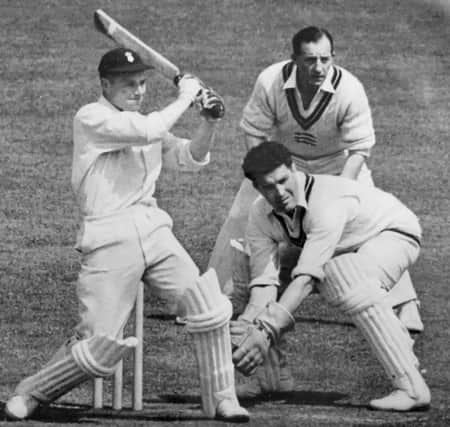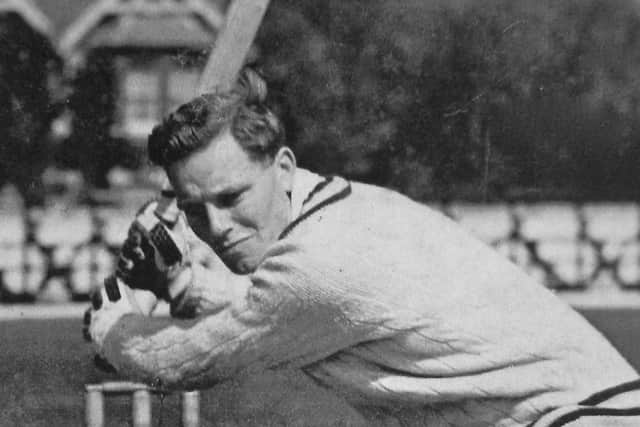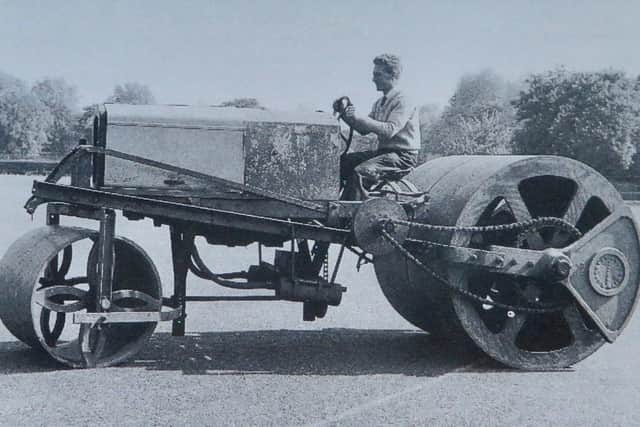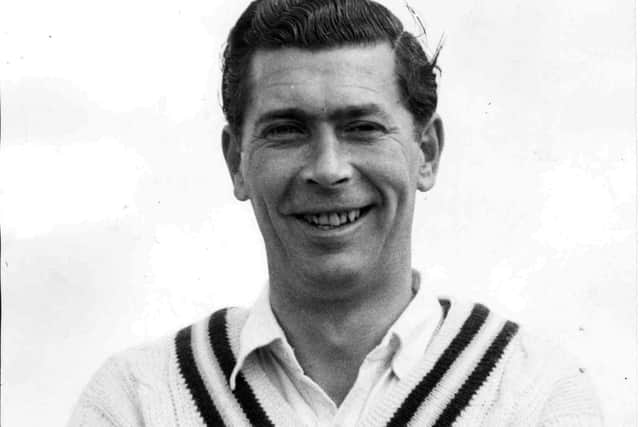Hampshire’s oldest surviving first class cricketer: My memories of playing in Portsmouth


Alan Rayment, who celebrated his 92nd birthday in May, made his first appearance at the United Services ground 71 years ago.
During his Hampshire career, which spanned 1949-1958, Rayment regularly appeared at Burnaby Road - no surprise given that the county played five or six Championship games every year in the city.
Advertisement
Hide AdAdvertisement
Hide AdThis month, though, marks the 20th anniversary of Hampshire’s final first class game in Portsmouth. Since The Ageas Bowl opened its gates for the first time in April 2001, the county have only played four Championship games at other venues - three at Basingstoke’s May’s Bounty (the last in 2010) and one at Newclose on the Isle of Wight last summer.


Asked for his memories of playing at the US ground, Rayment said: ‘I remember the big roller.
‘Remember those were the days of uncovered wickets - if it rained you had to sit and wait for the pitch to dry out.
‘That’s where the phrase ‘sticky wicket’ comes from.
‘Portsmouth was a chalk-based pitch so it was very hard - it was one of the hardest wickets in the country.


Advertisement
Hide AdAdvertisement
Hide Ad‘The mechanical roller was huge, one of the biggest around. The ball certainly came onto the bat if it was dry.
‘I faced some fast bowlers there - (Peter) Loader of Surrey and (Frank) Tyson, who Richie Benaud said was one of the fastest bowlers he had ever seen.
‘Different grounds had different soils. Portsmouth was a fast pitch, Bournemouth a much slower one and you had to adjust. There’s more conformity in the pitches today, I think the ECB have a recipe on how to produce a first class pitch.
‘When I played you had to slap the divots back down with the bottom of your bat if you were playing on a wet wicket.


Advertisement
Hide AdAdvertisement
Hide Ad‘Derek Shackleton was successful everywhere, but he used to love playing at Portsmouth - the wicket used to take the seam and the pace off the wicket was much faster than, say, Bournemouth.
‘Everyone who bowled seam up liked playing at Portsmouth.
‘Roy Marshall used to love playing there, he played some wonderful innings because it was a fast wicket.’
Shackleton is responsible for two of the best six bowling figures ever recorded in the 336 first class matches in Portsmouth (Hampshire played in 313 of them).
He bagged an astonishing 9-30 against Warwickshire in 1960, the visitors’ losing their last six second innings wickets for just six runs.
Advertisement
Hide AdAdvertisement
Hide AdShackleton also took 8-39 against Leicestershire in 1950 and 7-31 against the same opponents 13 years later.
Rayment scored his first Hampshire century in Portsmouth against Somerset in May 1952, hitting an unbeaten 100 out of a total of 253-9 in the first innings - No 10 Reg Dare (39) the second top scorer.
Rayment also top scored with 74 in the second innings in a game Hampshire won by 159 runs.
That year turned out to be Rayment’s best season with the bat, scoring 1,056 runs at an average of 23.46.
Advertisement
Hide AdAdvertisement
Hide AdBack in 2013, Rayment wrote and self-published his first book, ‘Punchy Through The Covers’. Though it boasted a cricket-related title, it focussed more on his family history and his early years prior to becoming a professional cricketer.
At the grand age of 92, he is currently working on his second book that covers his sporting life and is more than halfway through it.
Recalling the life of a professional cricket in the immediate post-war era, he told The News: ‘It was such a different environment back then, a very different social environment.
‘There was the post-war euphoria, the crowds were large in 1946/47/48 - there’d been no sport for so long.
Advertisement
Hide AdAdvertisement
Hide Ad‘After the coronation in 1953, there was a new Queen, a new focus - the crowds were a bit lower, people were working and there wasn’t the same relief you had in the immediate post-war years.’
He added: ‘There were marquees up during the Portsmouth festival week.
‘The Lord Mayor of Portsmouth always had a tent and the players from both sides used to go in after a day’s play and mix.
‘I remember I had a sherry in the Lord Mayor’s tent - I didn’t like it much!
Advertisement
Hide AdAdvertisement
Hide Ad‘The players always mixed back then, I’m not sure you get that today.’
The travel arrangement for county cricketers were also a lot different during Rayment’s Hampshire career.
‘You have to remember that back then the players would all get on a coach at Southampton to travel to Portsmouth, and then back again in the evening,’ he recounted..
‘The following morning we’d back on the coach again, and back and forth all the time - that was normal for us.
Advertisement
Hide AdAdvertisement
Hide Ad‘There were some long journeys. I remember once we travelled from Southampton to Hull on the train. We had to catch taxis across London to Kings Cross and then a train from Kings Cross to Leeds where we got on a coach to Hull.
‘We didn’t get to the hotel until 3 in the morning, and we were in the field at 11.30am the same day. But that was normal, all counties had the same issue.
‘When we played at Swansea there was no bridge over the Severn, and no motorways, so we had to go up to Gloucester and round the estuary - it took a very long time, but they were happy times.
‘It wasn’t until around 1952/3 that some of the players bought a car - an old car, because the wages were low. Petrol rationing had finished by then.’
The wages certainly weren’t high.
Advertisement
Hide AdAdvertisement
Hide Ad‘If you wanted to play cricket professionally, or you wanted to be an actor, or a musician - play in a swing band - or be a ballet dancer, if you wanted to play a sport or work in any of the arts, you did it for love,’ Rayment said.
‘When I came down from London in 1949 I was almost 21, married with a baby on the way, and I was on £5 a week. Half of that went on rent, and there was also a National Insurance stamp to pay.
‘We were left with the rest to buy food and clothes.
‘We were relatively low on the (wage) scale.
‘The money went up from £5 to £7 and 15 shillings when you were capped.
‘We all had to buy our own cricket equipment back then.
‘A committee member bought me a set of pads when I got my county cap, and that was the only piece of equipment that was ever bought for me.
Advertisement
Hide AdAdvertisement
Hide Ad‘There was also a win bonus of £5, and at the end of the season there was also ‘talent’ money - someone like Derek Shackleton or Roy Marshall might get hundreds, I might get £50.
‘The most I ever earned at Hampshire was £500 a year in 1957.’